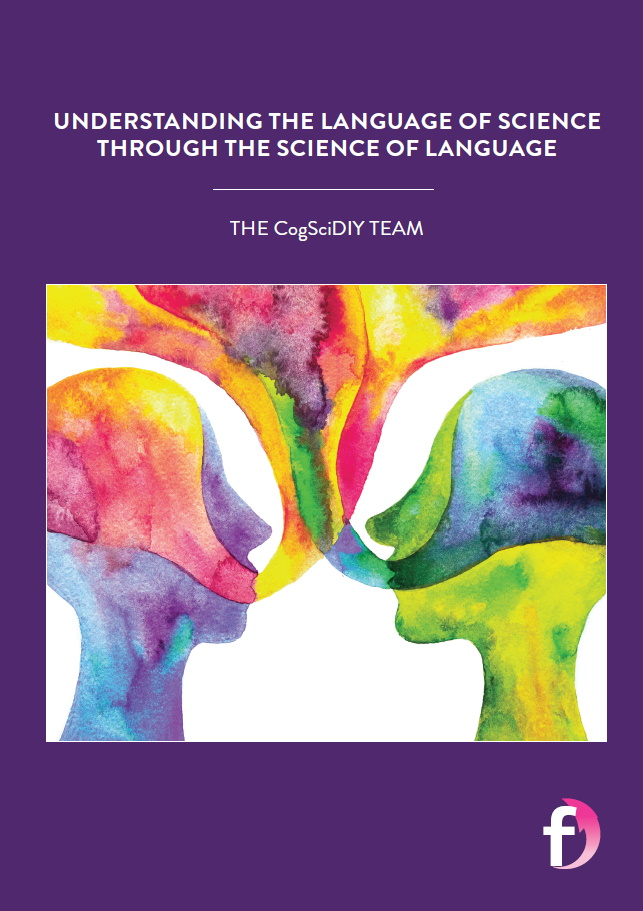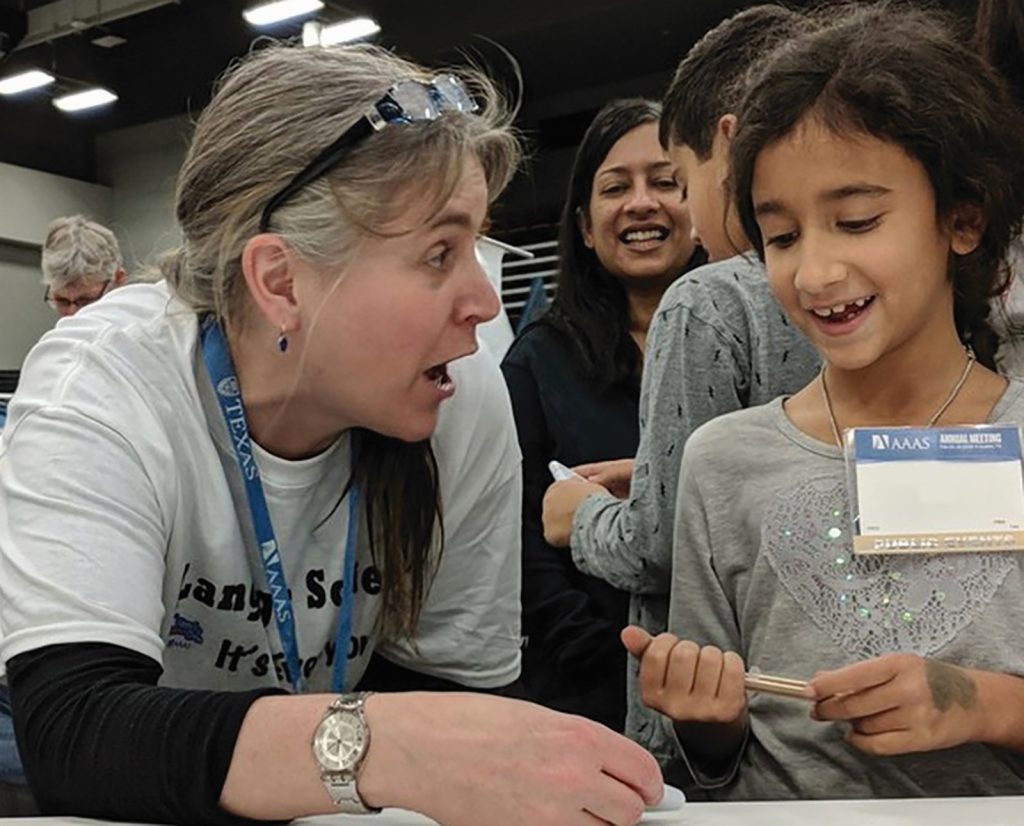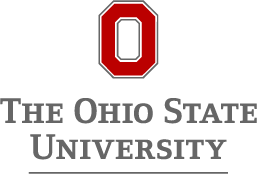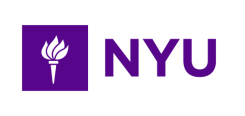Understanding the language of science through the science of language
How do people learn new languages? How can language be studied scientifically? How is scientific research conducted? At The Ohio State University and New York University in the USA, a team of researchers have established the Cognitive Science DIY project, to provide the public with the answers to these very questions while improving their understanding of the scientific process
If the pandemic has taught us anything, it is that many members of the public do not trust science. The spread of misinformation about the virus and vaccines stems from a lack of trust in the science behind them. If the public understood a bit more about what goes on behind-the-scenes in scientific studies, then perhaps their confidence in science and scientists would increase.
One method to involve the public in scientific research is through ‘citizen science’, where members of the public collect data (e.g., taking photos or measurements) that they send to a researcher. While this has benefits for both the researcher (they can acquire large quantities of data) and the public (they can contribute to research), in most citizen science projects, the public are just providing a service for the researcher who conducts the actual ‘science’.
Dr Laura Wagner, at The Ohio State University, and Dr Sudha Arunachalam, at New York University, decided to turn the concept of citizen science on its head. Why not let the public do the science? “While taking part in citizen science projects is one way to learn about science, it’s also important to show what happens ‘backstage’,” explains Laura. “How do scientists come up with research questions? Why do scientific studies look the way they do? What do scientists do with the data? We wanted a way to show people what goes on in a scientific study.”
CogSciDIY
Laura and Sudha are experts in language development, with a passion for communicating what real behavioural science looks like. So, along with team members Dr Lindsay Burns, Maria Cobo Nieto and Nick Bednar, they established the Cognitive Science DIY (CogSciDIY) project. The purpose was to teach the public about the scientific process, while answering questions about language through scientific research. “People who aren’t language scientists have such fascinating ideas for research questions! We wanted a way to involve the interested public so they could get some of their questions answered,” says Sudha. “It’s often frustrating to see the mistrust and misconceptions that are present in the public’s relationship with science. My hope is that projects like CogSciDIY will expand public understanding of the scientific process.”
The CogSciDIY programme ran for five weeks. Lindsay designed a science curriculum to accompany the language curriculum, so that each week participants learnt about different aspects of the scientific method while developing their own scientific research project about language. “At the beginning, we taught them about the scientific method,” says Sudha. “Then each week we led them through a component of the scientific process.”
ASKING QUESTIONS
In the first week, participants learnt about designing a research question. They were asked what questions they had about language. “People wanted to know all kinds of things about language!” says Laura. How do children learn their first language? How do adults learn new languages? Why do people speak in different accents? “Many of their questions were tied to their own personal experiences of learning languages,” explains Sudha.
The team collected all these questions and condensed them into a selection of potential research questions. In the second week, the participants voted on which research question they wanted to address in their study. The chosen option was ‘Does it help or hurt to learn a language if you hear it spoken by just a single person compared to hearing it spoken by many different people?’
CONDUCTING EXPERIMENTS
In the third week, participants learnt about conducting a scientific experiment. Maria designed an experiment to answer the chosen research question, but the participants voted on the design details. “We used a classic word-learning method where people have to learn the names of new objects,” explains Laura. This can either be done using nonsense words for the objects, or real words from unfamiliar languages. Both are valid options, and neither is perfect, as is so often the case with scientific research. Nick created videos explaining the pros and cons of each method, and after watching these, the participants voted to use nonsense words in their experiment.
In the fourth week, the experiment was conducted on a different set of participants. The CogSciDIY participants learnt about formulating hypotheses and were asked to guess what the results of the study would be. “Some expected the single-person condition to yield better learning while others expected the multiple-people condition to yield better learning,” says Sudha. It transpired that the experimental participants were good at learning the nonsense names of new objects both when they heard them from a single person speaking and when they heard them from multiple people speaking.
ANALYSING RESULTS
The team posted the experiment data for the CogSciDIY participants to view. “We were really excited how people got into the data,” says Laura. “Some people were so enthusiastic that they created their own graphs to display the data!” In the final week of the programme, participants learnt how to analyse and interpret the results.
Reference
https://doi.org/10.33424/FUTURUM228
One method to involve the public in scientific research is through ‘citizen science’, where members of the public collect data (e.g., taking photos or measurements) that they send to a researcher. While this has benefits for both the researcher (they can acquire large quantities of data) and the public (they can contribute to research), in most citizen science projects, the public are just providing a service for the researcher who conducts the actual ‘science’.
Dr Laura Wagner, at The Ohio State University, and Dr Sudha Arunachalam, at New York University, decided to turn the concept of citizen science on its head. Why not let the public do the science? “While taking part in citizen science projects is one way to learn about science, it’s also important to show what happens ‘backstage’,” explains Laura. “How do scientists come up with research questions? Why do scientific studies look the way they do? What do scientists do with the data? We wanted a way to show people what goes on in a scientific study.”
CogSciDIY
Laura and Sudha are experts in language development, with a passion for communicating what real behavioural science looks like. So, along with team members Dr Lindsay Burns, Maria Cobo Nieto and Nick Bednar, they established the Cognitive Science DIY (CogSciDIY) project. The purpose was to teach the public about the scientific process, while answering questions about language through scientific research. “People who aren’t language scientists have such fascinating ideas for research questions! We wanted a way to involve the interested public so they could get some of their questions answered,” says Sudha. “It’s often frustrating to see the mistrust and misconceptions that are present in the public’s relationship with science. My hope is that projects like CogSciDIY will expand public understanding of the scientific process.”
The CogSciDIY programme ran for five weeks. Lindsay designed a science curriculum to accompany the language curriculum, so that each week participants learnt about different aspects of the scientific method while developing their own scientific research project about language. “At the beginning, we taught them about the scientific method,” says Sudha. “Then each week we led them through a component of the scientific process.”
ASKING QUESTIONS
In the first week, participants learnt about designing a research question. They were asked what questions they had about language. “People wanted to know all kinds of things about language!” says Laura. How do children learn their first language? How do adults learn new languages? Why do people speak in different accents? “Many of their questions were tied to their own personal experiences of learning languages,” explains Sudha.
The team collected all these questions and condensed them into a selection of potential research questions. In the second week, the participants voted on which research question they wanted to address in their study. The chosen option was ‘Does it help or hurt to learn a language if you hear it spoken by just a single person compared to hearing it spoken by many different people?’
CONDUCTING EXPERIMENTS
In the third week, participants learnt about conducting a scientific experiment. Maria designed an experiment to answer the chosen research question, but the participants voted on the design details. “We used a classic word-learning method where people have to learn the names of new objects,” explains Laura. This can either be done using nonsense words for the objects, or real words from unfamiliar languages. Both are valid options, and neither is perfect, as is so often the case with scientific research. Nick created videos explaining the pros and cons of each method, and after watching these, the participants voted to use nonsense words in their experiment.
In the fourth week, the experiment was conducted on a different set of participants. The CogSciDIY participants learnt about formulating hypotheses and were asked to guess what the results of the study would be. “Some expected the single-person condition to yield better learning while others expected the multiple-people condition to yield better learning,” says Sudha. It transpired that the experimental participants were good at learning the nonsense names of new objects both when they heard them from a single person speaking and when they heard them from multiple people speaking.
ANALYSING RESULTS
The team posted the experiment data for the CogSciDIY participants to view. “We were really excited how people got into the data,” says Laura. “Some people were so enthusiastic that they created their own graphs to display the data!” In the final week of the programme, participants learnt how to analyse and interpret the results.
One of the most exciting elements of this project was that the participants genuinely helped create and shape the study, providing them with a scientist’s-eye view of what research involves. “It is important for people to learn about how scientific studies really happen,” says Laura. “It’s a creative process that involves lots of decision making, and often there isn’t a right or wrong answer when considering how best to design an experiment. But it’s helpful to see how the choices you make can influence the data you get.”
“CogSciDIY allowed members of the public to see the messy parts of science,” says Sudha. “Science is a slow process and there’s no such thing as a perfect research study. A big part of the process is thinking about what the next step would be to increase our understanding of the phenomenon. What would our participants do differently next time?”
WHAT NEXT?
“We think our CogSciDIY project can help people learn about how science works, build trust in science and show people how language can be studied scientifically,” says Laura. The next step will be to rerun the project, this time studying the participants themselves to investigate whether this is the case.
Why don’t you take part? The team will be back with another iteration of CogSciDIY, where you can learn about language science while helping design your own scientific research study. You can sign up to their mailing list to be notified when they go live.
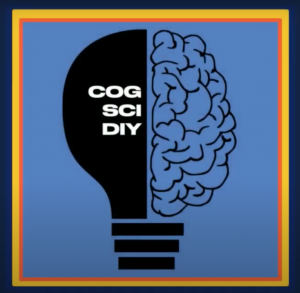 COGNITIVE SCIENCE DIY
COGNITIVE SCIENCE DIY
The Ohio State University and New York University, USA
FIELD OF RESEARCH: Language Science
RESEARCH PROJECT: Teaching the public about the scientific method through language science
FUNDERS: Ohio State BETHA (Battelle Foundation) Endowment Grant, New York University Institute of Human Development and Social Change (IHDSC) Seed Award
 COGNITIVE SCIENCE DIY
COGNITIVE SCIENCE DIY
The Ohio State University and New York University, USA
FIELD OF RESEARCH: Language Science
RESEARCH PROJECT: Teaching the public about the scientific method through language science
FUNDERS: Ohio State BETHA (Battelle Foundation) Endowment Grant, New York University Institute of Human Development and Social Change (IHDSC) Seed Award
ABOUT LANGUAGE SCIENCE
While most animals communicate with each other, as far as we are aware, ‘language’ is unique to humans. It is estimated that about 6,500 languages are spoken in the world today. Some, like English, Spanish and Mandarin, are spoken by millions of people around the world. Others, like Ongota in Ethiopia, Liki in Indonesia, and Paakantyi in Australia, are spoken by only a handful of individuals. “Language is an astonishing product of the human mind,” says Laura. “And, like any other piece of human cognition, it can be studied scientifically.”
HOW CAN LANGUAGE BE STUDIED SCIENTIFICALLY?
As scientists, Laura and Sudha are not concerned with how people ‘should’ use language but are interested in how people really do use it. “Language scientists study everyone, from infants to adults, users of spoken languages to users of sign languages, and industrialised nations to hunter-gatherer societies,” explains Sudha. We use language at all stages of our life, and it develops as we grow. Language scientists explore how and why this happens. This includes studying how children learn their first languages and how adults learn new languages later in life, and the different challenges that these groups face.
Language scientists also examine how languages themselves evolve through time, and why languages develop in different ways. Languages in different parts of the world often have very different structures and properties.
“Language scientists use all different kinds of methods to study how language works and how people use it, including brain imaging, eye-tracking, surveys, behavioural experiments and observations in the field,” adds Laura. This means that language scientists are addressing issues of language from a wide range of perspectives, from psychology to anthropology.
There is no single pathway into the field of language science, so you can enter from whichever direction most interests you. Language is a vast topic and scientists are interested in every aspect of it. The beauty is that as language is always evolving, so too are the methods and topics of inquiry. It is a field that can never truly be exhausted.
EXPLORE A CAREER IN LANGUAGE SCIENCE
• Visit the CogSciDIY website (create.nyu.edu/cogscidiy) to take part in the next iteration of their project. Experience what it is like to be a language scientist while learning about fundamental concepts of language science and answering your own scientific questions about language.
• With a degree in language science or linguistics, you could become an academic, studying whatever aspect of language fascinates you. You could work in education, using your expertise to help those who have trouble learning languages, or you could try to prevent endangered languages going extinct. Language science skills will also be useful for careers in publishing, marketing, translating and in the media.
• Times Higher Education (www.timeshighereducation.com/student/subjects/what-can-you-do-linguistics-degree) and Prospects (www.prospects.ac.uk/careers-advice/what-can-i-do-with-my-degree/linguistics) both have a wealth of information about what you could do with a linguistics degree.
• At school, English, foreign languages and psychology will all be useful for studying language science at university.
• Many universities will offer undergraduate degrees in language science or linguistics. Postgraduate degree options include communicative sciences, applied linguistics, and speech and language therapy.
• Laura is keen to emphasise that people can study language from a wide range of perspectives. She took classes in psychology, foreign languages and computer science. “Any class that focuses on what language is and how it works is good training for language science.”
• “Language science is inherently an interdisciplinary topic area,” says Sudha. “It is made up of connections to linguistics, cognitive psychology, developmental psychology, neuroscience, education, speech-language pathology, computer science and philosophy.”
MEET THE TEAM
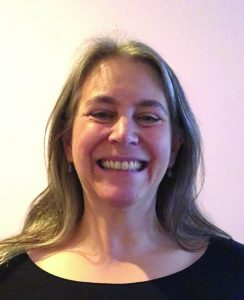
DR LAURA WAGNER
FIELD OF RESEARCH: LANGUAGE DEVELOPMENT
THE OHIO STATE UNIVERSITY, USA
I have always loved learning languages. I took classes in French, Latin and Japanese in high school and came to realise that I was mostly interested in what all these languages had in common. That led me to the field of linguistics and especially to the human cognition that creates language. After all, what languages really have in common is that they are a product of the human mind.
As an undergraduate, I double majored in language studies and cognitive science. I went on to get my PhD in linguistics and picked up a master’s degree in psychology along the way.
I established the Language Pod, which is a fishbowl-style research lab in the middle of our local science museum. In there, we conduct studies on many different language topics, including how people perceive regional dialects, how children learn about verb endings and how the melodies of speech influence language processing. Visitors to the museum volunteer to be our research participants!
Our lab is actually a museum exhibit that shows people what language science really looks like. As well as conducting research, we also train students to engage with the public using hands-on demonstration activities that show off classic results from the field of language science.
Given that I enjoy both languages and puzzles, it was amazing when I realised that language can be seen as the best puzzle ever! One of the most rewarding aspects of my work in the field of language science is that I get to think about language all the time and figure out new things about how it works.
Loving what you do is half the battle and I really think that my love for language science has made me successful at it. I truly do not mind spending a lot of time doing it!
Don’t be afraid to explore language in a new way. I started off really excited about learning foreign languages and ended up spending most of my time doing experiments with children learning their first language.

DR SUDHA ARUNACHALAM
FIELD OF RESEARCH: COMMUNICATIVE SCIENCES AND DISORDERS
NEW YORK UNIVERSITY, USA
I took a class called ‘Introduction to Linguistics’ during my first year of college, despite not knowing what linguistics was. I was hooked, so I took more linguistics classes and got involved as a research assistant on a project at my university. During my PhD in linguistics, I became interested in the human mind, how language is represented in our minds and how children manage to acquire those representations.
As a researcher in the field of communicative sciences and disorders, I work with children who are struggling to learn language. Many of these children are on the autism spectrum, and others have language delays with no known cause. I look for strengths in their language and cognition and make hypotheses about how those strengths can be applied to help them improve their language abilities.
Thinking about how language works is fun! And so is teaching others about it. Everyone uses language, so we all have intuitions about how language works. It’s rewarding to help people apply the scientific method to questions about language which enables them to think about language in new ways.
I loved seeing how engaged people were with our CogSciDIY project. Our participants contributed to every part of the scientific process – not only the fun, easy parts of asking a research question, but also the challenging, nitty-gritty parts of experimental design and analysing the data.
Human infants are the biggest source of inspiration to me. They learn to use the languages they are surrounded by in just a few years, making some adorable (and very revealing) mistakes along the way.
I think the most useful quality for a researcher is curiosity. Wondering how things work or why things happen is the starting point for coming up with a research question. Curiosity to find the answers to these questions keeps you going during the tedious parts of doing science.
Seek out elements of language that interest you and pursue them. Explore podcasts, documentaries and popular science books – there are tons of these about all different aspects of language science. Once you find a topic that interests you, try to learn more about it.

DR LINDSAY BURNS
EVALUATION SPECIALIST, PARAGON-TEC/NASA, USA
After an undergraduate degree in middle childhood education, I completed a master’s in education, alongside teaching a sixth-grade math class. Early on in my teaching career, I realised my interest lay in curriculum and leadership. So, I returned to university for a degree in curriculum, instruction and professional development, while also teaching physical science and integrated STEM to eighth- and ninth-grade classes. Teaching integrated STEM inspired me and completing the Endeavor STEM Teaching Certificate Project through NASA encouraged me to pursue a PhD in informal science education.
I am currently an evaluation specialist at Paragon-TEC and a NASA support contractor for NASA’s Office of STEM Engagement. I am part of a team that manages a grant for minority-serving colleges and universities to implement K-12 NASA STEM programming for afterschool clubs and summer events.
The CogSciDIY group was an amazing team to be a part of! I learned so much about language. With my background in integrated STEM, it was awesome to apply integration to science and language. I really appreciate this experience as, in my current role, we spend a lot of time discussing ways to integrate content. My experience with CogSciDIY helped me to better understand the planning and implementation of science in ways that are impactful for participants.
I have always loved maths, science and building things. Both of my parents are engineers who encouraged me to design and build things. My high school chemistry teacher inspired me to be an educator. He was consistent in pushing us to be the best we could be while supporting our goals. I want to make a similar impact with my students.
If you want to work in education, teach something you are passionate about! It is so much more fun to teach something you enjoy. Your passion will radiate from you and positively impact your students and colleagues.
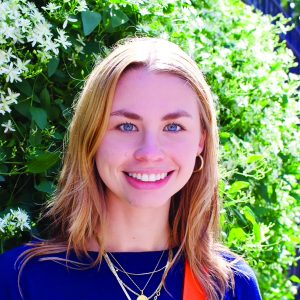
MARIA COBO NIETO
MASTER’S STUDENT IN COMMUNICATIVE SCIENCES AND DISORDERS, NEW YORK UNIVERSITY, USA
I’ve always been interested in language, especially when it comes to language acquisition in bilingual children. My older brother Mariano inspired my interest in language science as he was diagnosed with autism at the age of two. When I was younger, I always enjoyed playing ‘speech therapy’ with him. I would design activities to teach him new words and help him learn how to communicate. The most rewarding thing about studying in the field of speech-language pathology is helping others to communicate.
I obtained a BSc in speech-language pathology and audiology, with minors in psychology and Spanish for the health professions for native speakers. While at university, I worked with two different research labs, the Marquette Autism Project and the Speech and Swallowing Lab, working on the English Accented Spanish Project. Being a research scholar sparked my interest in the interdisciplinary approaches surrounding clinical work and research.
I am now studying for a master’s in communicative sciences and disorders with a bilingual extension. My research interests include language acquisition and language development in bilingual children, as well as children on the autism spectrum. I am also a research assistant and have worked on various language-related projects in both English and Spanish.
My involvement in the CogSciDIY project gave me numerous skills, such as time management, teamwork and effective communication. These were especially useful during the pandemic when everything was done remotely. I am applying these skills as a master’s student and will continue to apply them in the future, hopefully as a PhD student.
Do something that you are passionate about and keep an eye on the prize, regardless of people you may encounter along the way who may not believe in you. Also, always ask questions and reach out when in doubt.
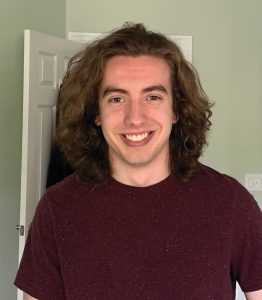
NICK BEDNAR
MANAGER OF OPERATIONAL VOLUNTEER EXPERIENCES, CENTER OF SCIENCE AND INDUSTRY, USA
I loved working with the CogSciDIY project! Apart from the amazing team, I think the highlight was being able to share something that we all care so much about. Language is awesome, and it was so fun to get others involved with language in such a unique, hands-on way.
I studied linguistics at university, and I now work at a science museum as the manager of operational volunteer experiences. It is my job to keep volunteers supporting the outreach goals inside our museum. I’m currently creating new ways of getting volunteers started and skilled at doing what we need them to do. That means writing proposals and plans, designing our online scheduler, and thinking about how we can best serve our institution and community.
Part of the fun of CogSciDIY was that I got to wear a lot of different hats! Many of the skills I learnt during the project help me now in my current role. For example, learning how to make the videos has made it so much easier for me to make polished content for our volunteer program website and the data management skills I acquired make record-keeping at the museum a breeze!
So many people have inspired me to follow this path, with my university professors and all the museums I’ve visited being particularly notable. I’ve learned to love getting to do science while also teaching science to others. I enjoy connecting with people, and it is so rewarding to give them that ‘ah-ha’ moment when they learn something new.
Embrace what you find exciting. Say ‘yes’ to opportunities that come your way and make the best of them. Who knows where you’ll end up!
Write it in the comments box below and CogSciDIY team will get back to you. (Remember, researchers are very busy people, so you may have to wait a few days.)

